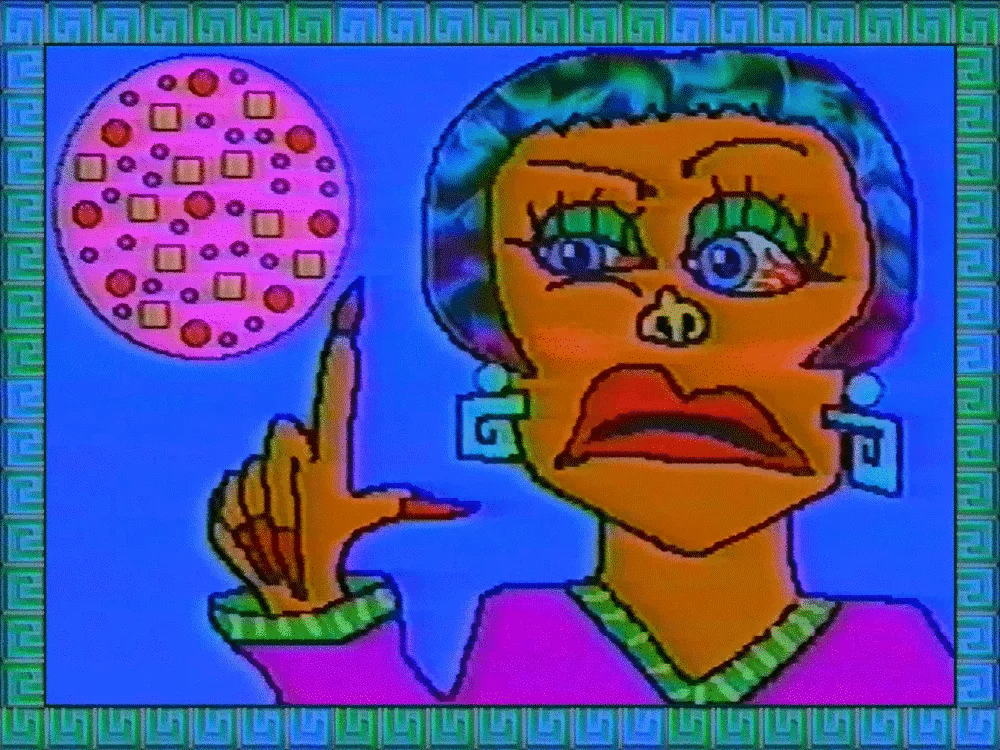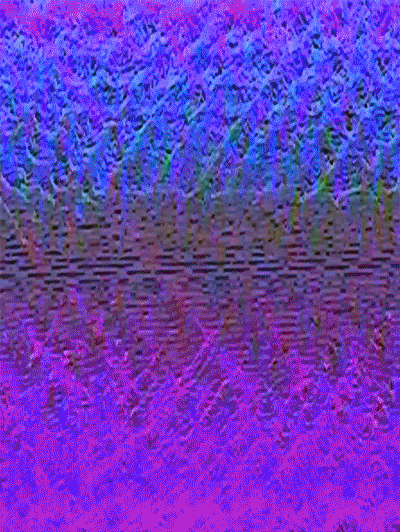Learning from Collectors
A look back at the Collections interviews published on Outland over the last year shows how a vibrant patchwork of differing ideals is shaping the field of digital art.


A key tool in Sarah Zucker’s studio is the Sony Video Painter, a device that lets the user draw on a television screen via VCR hookup. Released as a children’s toy in the early 1990s, it’s now a finicky antique. Zucker sits for hours at a time, using the device to add funky 8-bit figures to dynamic textures that she has created with software and transferred to analog tape. The results are “video paintings” like Be Not Afraid (2021), where an Old Testament angel glows with ripping psychedelic color. Zucker’s process layers forms of mediation: her digitally native animations pass through an analog ecosystem of tape, broadcast equipment, CRT monitors, and other obsolete inventions of the twentieth century before being redigitized for display and circulation online. There’s an element of nostalgia in Zucker’s work, though it’s not the endpoint. It’s more of an ambient fact, the persistence of memory in the present, the condition of living in a period when technologies of communication and entertainment succeed each other constantly and the past resurfaces irregularly in the churn of search engines and social media. Her art often reflects on this experience of time. Her first work minted as an NFT, 5D Fabric (2019), is a trippy abstract evocation of time travel through the intersection of analog and digital. The video-painting portraits of “The Cassandra Complex,” made during the madness of the 2021 NFT boom and backlash, allude to Greek myth to express her feeling of seeing digital art’s future and not being believed. Zucker’s engagement with media and time makes her an iconic artist of this NFT era, when a new format is transforming the way art is encountered and collected.

I’m excited to introduce Zucker as Outland’s first guest editor. Her tenure kicks off a program that aims to expand the range of perspectives and voices featured in Outland by inviting leaders in the field of digital art to take the reins of our editorial platform. In our initial meeting about the project, Zucker laid out a set of questions she wanted to see addressed in the content we’ll be publishing over the next few weeks. Many of these grew out of her own conviction that the fundamental utility of the NFT is not as an instrument for the financialization of art, but rather as a “better mousetrap,” as she puts it, for editioning videos, gifs, performances, and other digital and ephemeral works. How has the advent of NFTs affected the kind of work that artists are making? How has it impacted the place of digital art in their studio practices? How does the market encourage experimentation among artists working with more traditional mediums? How has the understanding of NFTs in the traditional art world matured since last year’s controversies?
This final question prompted a pair of articles we’ll be publishing at the end of this year, collecting responses from artists and art professionals on how attitudes toward NFTs among their colleagues and peers have shifted over the course of 2022. The issues that she raised are further explored in a conversation between Zucker herself and Amir H. Fallah, a painter whose experimental tendencies led him to a robust digital art practice, and an interview with collector Shahin Tabassi, whose inquisitive spirit took him from street art to contemporary painting and digital work. At Zucker’s suggestion, we’ve commissioned profiles of artists Helena Sarin and Matt Kane. Sarin, like Zucker, has a practice of repeated mediation, rooted in a recursive process of working with GAN outputs and physical media, from drawing to ceramics. Kane, a vocal advocate for artists in the NFT space, was trained as a painter, and brings a nuanced understanding of composition to his conceptually complex generative art projects. All these individuals approach art with courage and a sense of adventure, an understanding of the past and a restlessness for the future to come, making them strong leaders in the construction of this new digital environment.
Brian Droitcour is Outland’s editor-in-chief.
